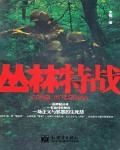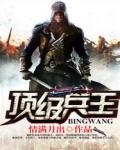Chapter 20 Observation
The military is actually a society, but a special one. In a society, there are ethnic groups and differences. In the military, the academics look down on the practicals, thinking that these people are rough and uneducated, while the practicals also look down on the academics, thinking that these student soldiers are sissy, who have the ability to talk about military affairs on paper, but when it comes to their ability on the battlefield, they are not up to par.
As a practical commander, Bielik was such a person. He commanded his tank regiment in the Battle of Nomonhan, performed outstandingly, and directly participated in the encirclement and annihilation of the Japanese 7th Division and the 23rd Division, for which he was awarded military merit. Although he was not qualified to participate in the strategic battle plan in that battle, he did have an outstanding personal performance in the tactical arrangement of battlefield details. How could a person like him take a group of college student soldiers who had never been on the battlefield seriously?
What about Yuri? He was also a commander who came from a practical combat background. Although the company he once commanded was completely annihilated by the Finnish army in the battle to attack Oulu, and he was the only one who escaped, it was not his company that was annihilated in that battle, but two entire divisions. Therefore, the responsibility for the failure of the battle should be attributed to the army command, and it had nothing to do with him. On the contrary, it was precisely because the battle was quite difficult and the Soviet army suffered heavy losses, so it was already very glorious for him to be able to come back alive, not to mention that he had gained something. Psychologically, Bielik had a sense of identity with Yuri, thinking that they had a common language and were commanders at the same level, so the two sides naturally got along well.
In one night, the three people discussed the various combat environments that might arise in the military exercise, as well as the main strategies that should be adopted in the corresponding combat environments. In order to achieve better results, the three people even conducted rehearsal confrontation exercises on certain cases.
The whole night passed by unknowingly. When the last exercise aimed at capturing the high ground ended and August, who acted as the referee, finally determined that the blue army led by Yuri had won, the three of them ended the "fight" of the night with reluctance.
Needless to say, Yuri did benefit a lot from this night's experimental exercise. Even though it was just a game on paper, he still found a different kind of fun in it. It was also the first time since his rebirth that he developed a strong interest in the skill of "command".
The three of them simply washed up. Yuri and August did not return to their own residence, but made an appointment with Belik to go to the academy together. They had breakfast in the academy cafeteria and went to the exercise classroom designated by the instructor on time.
According to the normal class time, all the students of the two command classes gathered. The classroom converted from the old workshop was packed with people. Familiar and unfamiliar students crowded in, waiting for the drawing of lots to begin.
The skinny Leonardo? Colonel Petrovsky was the instructor for this exercise. He asked his assistant to hang four large wooden boards on the north wall of the classroom to display the drill. At this moment, the four boards were covered with white cloth, so you couldn't see what was on them.
It can be seen that the academy should attach great importance to this exercise. There are eight instructors who come to serve as referees, and the remaining two division-level political commissars act as supervisors.
There are two boxes for drawing lots on the podium, one on the left and one on the right. Each group of students participating in the exercise needs to send a representative to draw lots. The group that draws the red lot is the "Red Army", and the group that draws the blue lot is the "Blue Army". The red and blue are opposite in color but the same number is a group of competitors. As for the order of the competition, it is based on the number, and the groups from 1 to 4 are the first group to participate in the exercise.
The person in charge of drawing lots for Yuri's group was August. This guy had bad luck as he drew the blue number 6. In other words, they would be the second group to participate in the exercise, and their opponent would be the red number 6.
The instructors on site were very strict. Not only were loud noises prohibited, even whispering would be subject to a warning. Each student could only sit in his or her own chair and watch others' exercises quietly.
The entire drawing process lasted less than 20 minutes, after which the first four groups performed their exercises.
The white cloth on the display board was removed, and four different battlefield situation maps appeared. The first display board was clearly defined as an offensive and defensive battle. The battlefield terrain was high ground, and the Blue Army occupied an advantageous position. The three positions on the high ground were controlled by the Blue Army. The Red Army's combat mission was to break through the Blue Army's high ground defense line. Seizing any of the three positions would be considered a victory.
The second display board shows a salient combat situation diagram, in which the Blue Army is also in a defensive position. The Red Army's combat mission is to break through any position of the Blue Army's salient and capture its immovable flag to win.
The third display board shows a situation diagram of the breakout operation. The battlefield environment is that part of the Red Army is surrounded by the Blue Army. The Red Army's combat mission is to launch a concentric assault with the peripheral troops to rescue the besieged friendly forces, while the Blue Army's mission is to effectively strike the Red Army's peripheral troops while annihilating the besieged Red Army. The Red Army will win if the besieged troops break out of the encirclement or annihilate two-thirds of the Blue Army's manpower.
The fourth display board shows a situation diagram of an assault operation. The red and blue sides each have their own positions, and both sides need to use all means to break through the other side's defense line, while at the same time preventing their own defense line from being broken through by the other side.
Combined with the various battle terrains given on the display board, at first glance, it is obvious that the fourth display board, that is, the assault exercise, is the simplest, because it is a head-on collision and a battle of attrition. But in Yuri's opinion, this combat exercise is the most complex and the most difficult to master, and of course, the most difficult to perform well.
All the display boards were unveiled, and the first eight groups participating in the exercise came on stage. They selected display boards according to their numbers and then had a tactical discussion. The instructor gave a discussion time of 20 minutes. At the same time, the students watching could also discuss in their respective groups.
"We are number 6, should we choose the second display board?" August said impatiently when he saw that the instructors allowed everyone to discuss. If this order was correct, then they could have an extra hour of planning time.
"That's not necessarily true," Bielik said without turning his head as he looked at the first display board. "The instructors will change the order, and maybe even the display boards."
This is something no one can say for sure, and the possibility is very high.
"Bolianka, what do you think of the situation of the first group?" After staring at the display board for a while, Belik turned his head and looked at Yuri. To be honest, Yuri's comprehensive command ability last night was not very good, and could only be considered unsatisfactory. However, in Belik's opinion, his occasional brilliant ideas were always amazing.
Yuri shook his head and said nothing. It was not because he didn't want to say anything, but because he didn't want to show his weakness. If he really wanted to say it, from the perspective of the Blue Army, this was a positional defense battle, and there were only four elements to winning a positional defense battle: first, multi-layer linear defense with support points; second, there must be enough reserves; third, the firepower must be strong enough; fourth, the protection of the flanks was the top priority.
However, in this exercise, the Red and Blue sides had similar manpower and firepower, and the Blue Army had only three lines of defense on the high ground, which seriously lacked the depth of defense. In addition, due to the terrain, the flank defense was also very weak. Therefore, if the Blue Army wanted to fight well in this battle, its main focus should not be limited to the defense of the position, but should be reflected in the periphery, that is, whether it could seize the favorable opportunity to launch a counterattack against the Red Army.
Yuri didn't say anything, and Belik didn't ask any further questions. The three of them didn't continue the discussion, but started watching the competition between the first batch of students.
The 20- minute group consultation time passed quickly, and with the instructor's order, the real exercise began.
Because of Bielik's questions, Yuri's main attention in the initial stage was focused on the first display board.
Both participating teams came up with their initial battle plans and arrangements, and the presiding instructor displayed the troop deployment status of both sides on the display board.
At this point, many problems can actually be seen. Where the artillery of both sides is deployed, how the armored forces plan to be used, etc., can almost figure out the combat methods they are going to adopt.
As for the Blue Army, their artillery was placed in the rear of the position, which was obviously to provide fire support for the defense of the position on the high ground. At the same time, its main force was placed on three lines of defense, and the armored forces were placed in the rear for maneuvering, probably to cover the flanks of the position. In addition, the Blue Army also retained a reserve force. How to say it, this is a very regular tactic, strictly defending, although regular but not easy to shine.
The same was true for the Red Army. Their tactics were more "Sovietized". Their main forces were deployed on the front battlefield. The armored forces cooperated with the infantry, and the role of the artillery was to provide firepower preparation before the attack. The most disappointing thing was that the Red Army did not make any tactical adjustments in response to the Blue Army's deployment. They did not even arrange a small-scale force to harass the enemy's flanks.
Such operations are boring, and even Yuri feels this deeply. But then again, this seems to be normal. At present, the low quality of Soviet commanders and the rigidity of their tactics are common phenomena. After all, most of the experienced commanders have been purged, and most of the commanders now are young people who have just been promoted.
The battle of the first group quickly turned into a battle of attrition, with nothing to watch. Yuri shifted his attention and began to pay attention to the situation of the second group.



